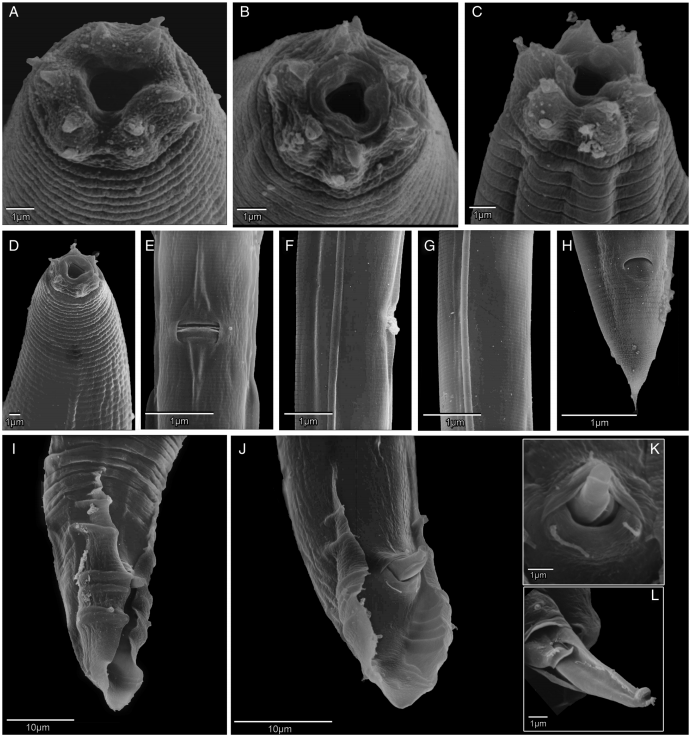
Genetics: Systematically producing color-blind fish
Color perception is essential for the survival and reproduction of many animals. This study, published in BMC Genetics, demonstrates the development of a systematic procedure, using the CRISPR/Cas9 system, for making color blind Japanese rice fish and testing their spectral sensitivity under light- and dark-adapted conditions. This fish model system can prove useful for studying visual systems and vision-dependent behaviour and can potentially be extended to study color perception in other non-mammalian vertebrates. Finally, it could be valuable for the advancement of genetic or regenerative methods to treat human color blindness.
Public Health: Reducing diabetes risk with weight management
Weight reduction for individuals at high-risk of diabetes is a key measure and policy paradigm for the prevention of the disease. This observational cohort study by Feldman et al., represents a 10-year follow-up in a group of more than 33,000 Swedish participants between the ages of 30-60. It demonstrates a strong association between the risk of incident diabetes and the relative weight of the participant in adulthood. Additionally, the authors show that as many as 1 in 5 diabetes cases could be prevented if, at a population level, weight in adulthood is maintained. Finally, it concludes that the combination of the former approach together with moderate weight loss for high-risk individuals would have great potential, from a public health perspective, in diabetes prevention.
Psychiatry: SSRIs versus placebo in patients with major depressive disorder
Selective serotonin reuptake inhibitors (SSRIs) are often the first line of treatment for depression. The objective of this study, published in BMC Psychiatry, is to conduct a systematic review assessing the effects of SSRIs versus placebo, ‘active’ placebo, or no intervention in adult participants with major depressive disorder. Meta-analysis data indicate that SSRIs versus placebo seem to have statistically significant effects on depressive symptoms, but according to the authors, the clinical significance of these effects seems questionable and all trials were at high risk of bias. The results show that the harmful effects of SSRIs versus placebo for major depressive disorder seem to outweigh any potentially small beneficial effects.
Image of the month: Characterising a new species: Caenorhabditis monodelphis
The nematode genus Caenorhabditis has been integral to our understanding of metazoan biology and has provided key insights into molecular and developmental biology. In this study, published in BMC Zoology, Slos et al. use both morphological and molecular analyses to characterise and describe a new species, Caenorhabditis monodelphis. Scanning electron micrographs of Caenorhabditis monodelphis are utilised to showcase morphological differences between males and females, focusing mainly on genital differences.

Evolutionary Biology: Investigating the evolution of reaction norms across tropical butterflies
Developmental plasticity, which is considered to have profound macro-evolutionary effects, is omnipresent among plants and animals. This study by van Bergen et al. investigates, using a comparative framework, the evolution of reaction norms for a variety of life history and morphological traits across five related species of mycalesine butterflies from the Old World tropics. It demonstrates that the integrated phenotypic plasticity of a broad suite of traits is shared among species from three geographically independent lineages of mycalesine butterflies, but concurrently, there are examples of evolutionary change where independent traits show different, ‘uncoupled’ patterns of reaction norm evolution.
Infectious Diseases: Reviewing the UK management of HIV in pregnancy
The potential for HIV transmission between a pregnant woman and her unborn child was first recognised in 1982. The prevention, however, of mother to child transmission (MTCT) is still very complex: interventions aim to reduce risk throughout pregnancy, labour, delivery and the neonatal period. Since 2001, the British HIV Association (BHIVA) has produced guidelines to support clinicians in the delivery of care aimed at reducing MTCT. This audit reviews the UK management of HIV in pregnancy, in comparison with the 2012 BHIVA guidelines. Having investigated more than 1400 pregnancies, the study demonstrates a need for services to review their ability to access urgent HIV testing, to strengthen referral pathways between general and specialist antenatal care services and to identify where delays in starting women on antiretroviral therapy are occurring. Finally, local policy should be kept up to date with national guidance to ensure women are able to access the best possible care available.
Ecology: Do predator cues affect trait variability in marine dinoflagellates?
Phenotypic plasticity is commonplace and enables organisms to respond to environmental variations. However, the ability of various genotypes to produce a common, environmentally cued phenotype may differ due to genetic variation between individuals .This study, in BMC Ecology, analysed the plastic response of two genotypes of the marine dinoflagellate Alexandrium fundyense, in response to grazers or grazer cues, in order to characterise their effect on trait variability. The study demonstrated that selection on different genotypes can occur in the presence of plasticity due to different costs and trade-offs that arise for the respective genotype. The occurrence of multiple environmental cues to respond to in nature might, in fact, equalise the effects of strain-specific trade-offs within populations.
BMC Research Notes: Goes back to its roots!
BMC Research Notes has reaffirmed its focus on publishing research outputs which are useful but often overlooked by traditional research journals such as updates to previous work, additions to established methods, single observations, short null results research proposals and data management plans. To increase clarity and simplicity, we have reduced the number of article types and created ‘Research note’, the journal’s main article format with a word limit of 2,000 making it a true note article structured as introduction, main text and limitations. Finally, we have expanded the scope to also welcome submissions on physical and computer sciences, engineering and mathematics.
Comments